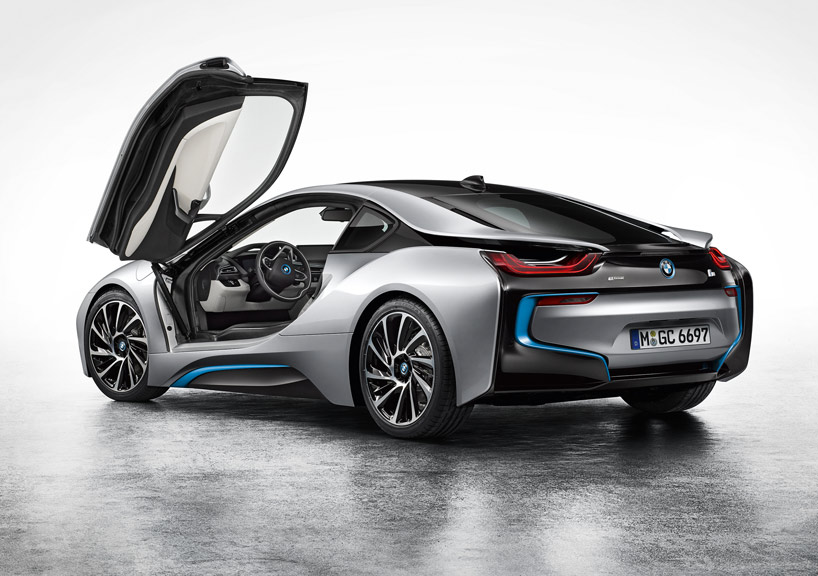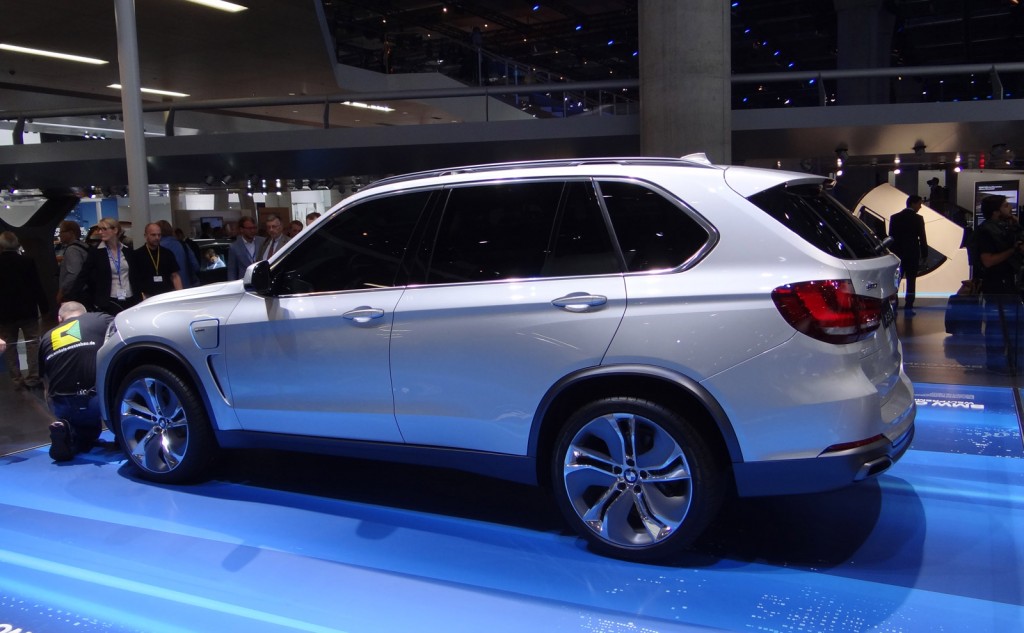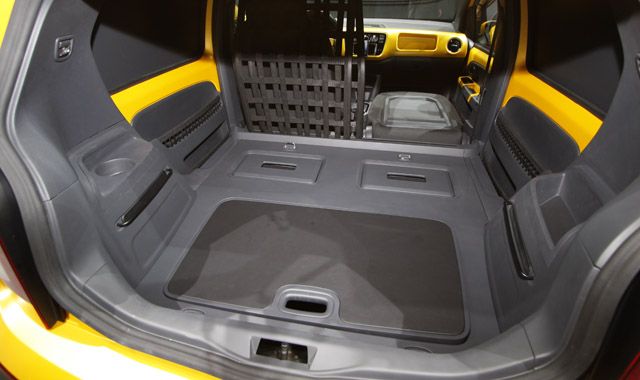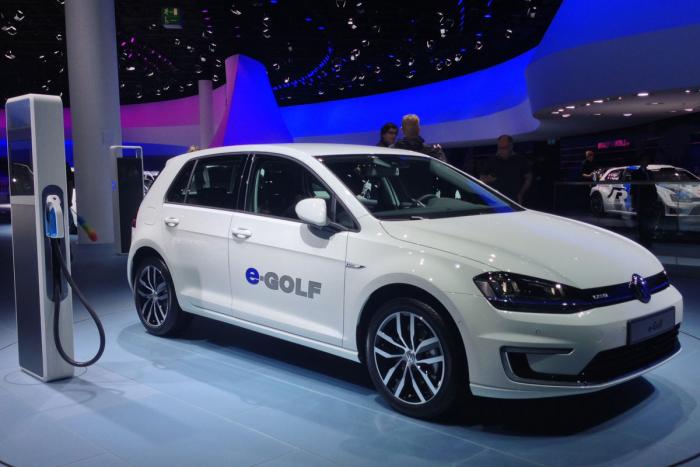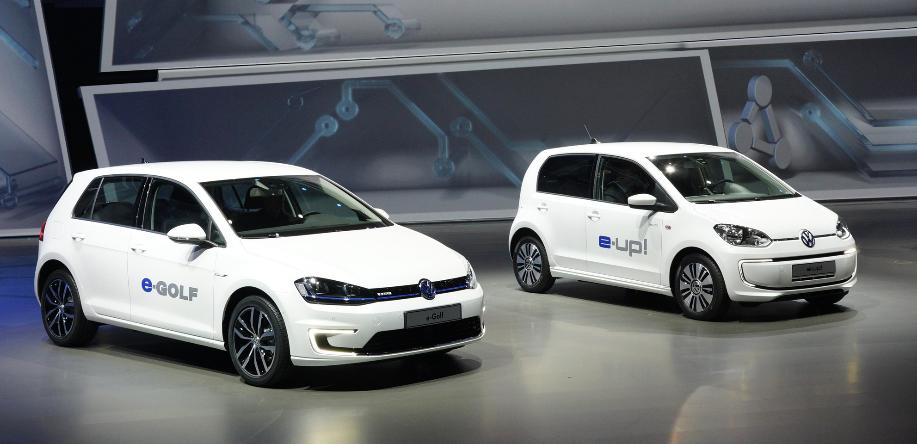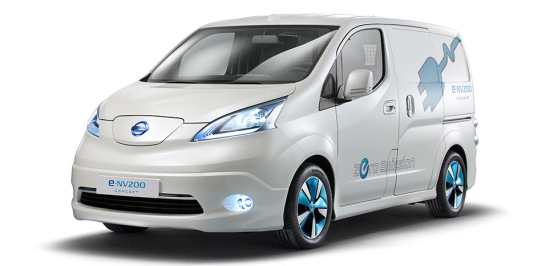By Johnson
The year 2014 look to be quiet an interesting year. This year will have the maximum electric cars from different manufacturers on the roads. Till now most of the companies were in the testing stage and from this year onwards we will see new cars on the market to be purchased. Some of the cars like the Volkswagen’s e-load up were quite odd although Volkswagen had got in well priced cars and BMW is still deciding to whether to go all electric or to go the Hybrid way. On the other hand Via seems to be concentrating on the commercial sector with its Vans and Trucks where the playing field is almost empty. And of course BYD is surely going to be a major contender, not only as a bus manufacturer, but also as a car manufacturer.
While going through the below list, one thing will dawn upon you is that, most of the luxury car makers are just pretending to make electric cars. They are just not interested in making pure all electric car and that they more comfortable making cars the old way and using internal combustion engine. Over a period of time these car makers will be selling petrol-only cars to the “high value” customers and will try to keep them on the Petrol leash.
1. The Audi A3 e-tron car – Major Pretender
A two-seater, similar in appearance to the Audi R8 but slightly smaller, is powered by four UQM Technologies motors, providing four-wheel drive. A sedan car having 4 wheel drive… somebody should be kicked… real hard. Anyway, together, these produce 313 PS (230 kW; 309 hp) and 4,500 N·m (3,319.03 lb·ft) of torque, resulting in an acceleration of 0 to 100 km/h (62 mph) in 4.8 seconds.
A 470 kg (1,036 lb) 42.4 kWh lithium-ion battery is located in front of the rear axle and provides a range of approximately 248 km (154 mi) with a full charge taking 6–8 hours from a normal household socket. The ceramic brake discs can also provide regenerative braking energy. A limited production model based on this car, called the R8 e-tron is reported to be under development. When it will be developed your guess is as good as mine. Could be priced around $ 100,000.
A two-seater, similar in appearance to the Audi R8 but slightly smaller, is powered by four UQM Technologies motors, providing four-wheel drive. A sedan car having 4 wheel drive… somebody should be kicked… real hard. Anyway, together, these produce 313 PS (230 kW; 309 hp) and 4,500 N·m (3,319.03 lb·ft) of torque, resulting in an acceleration of 0 to 100 km/h (62 mph) in 4.8 seconds.
A 470 kg (1,036 lb) 42.4 kWh lithium-ion battery is located in front of the rear axle and provides a range of approximately 248 km (154 mi) with a full charge taking 6–8 hours from a normal household socket. The ceramic brake discs can also provide regenerative braking energy. A limited production model based on this car, called the R8 e-tron is reported to be under development. When it will be developed your guess is as good as mine. Could be priced around $ 100,000.
2. Ford Focus Electric - Contender
5-door hatchback Focus Electric, with a 23kWh, liquid-cooled lithium-ion battery pack and a range of 76 mi (122 km), ranks as the most fuel-efficient car sold in the United States in the compact class. Ford began taking online orders on November 2, 2011, with pricing starting at US$39,995, including a US$795 destination charge, but before the US$7,500 US federal tax credit, along with other state and local incentives available for eligible buyers of plug-in electric vehicles. The 2012 Focus Electric is eligible in California to a US$2,500 rebate through the state’s Clean Vehicle Rebate Project (CVRP), and also was granted free access to California’s high-occupancy vehicle lanes (HOV) for solo drivers.
When compared to other plug-in electric vehicles available in the U.S., the Focus Electric has essentially the same price as the 2012 Chevrolet Volt plug-in hybrid, and it costs US$3,945 more than the base-model 2012 Nissan Leaf .
5-door hatchback Focus Electric, with a 23kWh, liquid-cooled lithium-ion battery pack and a range of 76 mi (122 km), ranks as the most fuel-efficient car sold in the United States in the compact class. Ford began taking online orders on November 2, 2011, with pricing starting at US$39,995, including a US$795 destination charge, but before the US$7,500 US federal tax credit, along with other state and local incentives available for eligible buyers of plug-in electric vehicles. The 2012 Focus Electric is eligible in California to a US$2,500 rebate through the state’s Clean Vehicle Rebate Project (CVRP), and also was granted free access to California’s high-occupancy vehicle lanes (HOV) for solo drivers.
When compared to other plug-in electric vehicles available in the U.S., the Focus Electric has essentially the same price as the 2012 Chevrolet Volt plug-in hybrid, and it costs US$3,945 more than the base-model 2012 Nissan Leaf .
3. A Tesla model S car - Contender
The base Model S starts at US$69,900 with a 60 kW·h battery pack up to US$79,900 with the 85 kW·h pack before any government subsidies. Global cumulative sales of the Model S passed the 25,000 unit mark in December 2013. Sales in the year 2013 were as follows:
· U.S - 21,400 units
· Norway - 1,986 units
· Netherlands - 1,195 units
· Canada - 600 units
The Model S became the first electric car to top the monthly sales ranking in any country, as the car led new car sales in Norway twice, first in September and again in December 2013. The Model S also ranked as the third top selling plug-in electric car in the U.S. market in 2013.
The base Model S starts at US$69,900 with a 60 kW·h battery pack up to US$79,900 with the 85 kW·h pack before any government subsidies. Global cumulative sales of the Model S passed the 25,000 unit mark in December 2013. Sales in the year 2013 were as follows:
· U.S - 21,400 units
· Norway - 1,986 units
· Netherlands - 1,195 units
· Canada - 600 units
The Model S became the first electric car to top the monthly sales ranking in any country, as the car led new car sales in Norway twice, first in September and again in December 2013. The Model S also ranked as the third top selling plug-in electric car in the U.S. market in 2013.
4. Tesla Model X - Contender
The Tesla Model X is a full-size crossover utility vehicle (CUV) in development by Tesla Motors. The prototype was unveiled at Tesla’s design studios in Los Angeles on February 9, 2012. Production is scheduled to begin by late 2014. The Model X is available in all-wheel drive (AWD) versions. The AWD versions of the Model X will use two motors, one for the front and the other for the rear wheels, unlike conventional AWD systems which only have one source of power. This model is expected to exceed 500kms per charge getting the refill rate on par with the Petrol Sedans of the wrold.
Expected to be priced at around $85,000, the Model X is supposed to do 0–60 MPH in 4.4 seconds outperforming many sports cars and the fastest CUVs as well. (That’s faster than the BMW i8 for less than half the price.) The Model X will also have all-wheel drive, which the Model S doesn’t have. The Model X has falcon-wing doors. The Model X offers room for seven in three rows of seats and their luggage. It also has two trunks: the standard rear trunk and an additional front trunk under the front hood where internal combustion engines are usually found.
This is a great car but if this model fails Tesla could as well shut shop!
The Tesla Model X is a full-size crossover utility vehicle (CUV) in development by Tesla Motors. The prototype was unveiled at Tesla’s design studios in Los Angeles on February 9, 2012. Production is scheduled to begin by late 2014. The Model X is available in all-wheel drive (AWD) versions. The AWD versions of the Model X will use two motors, one for the front and the other for the rear wheels, unlike conventional AWD systems which only have one source of power. This model is expected to exceed 500kms per charge getting the refill rate on par with the Petrol Sedans of the wrold.
Expected to be priced at around $85,000, the Model X is supposed to do 0–60 MPH in 4.4 seconds outperforming many sports cars and the fastest CUVs as well. (That’s faster than the BMW i8 for less than half the price.) The Model X will also have all-wheel drive, which the Model S doesn’t have. The Model X has falcon-wing doors. The Model X offers room for seven in three rows of seats and their luggage. It also has two trunks: the standard rear trunk and an additional front trunk under the front hood where internal combustion engines are usually found.
This is a great car but if this model fails Tesla could as well shut shop!
5. BMW i3 - Contender
5-door sedan urban electric car, range is 130 to 160 km (80 to 100 mi), and up to 200 km (120 mi) in the most efficient driving mode (read around 55 kmph). Mass production of the i3 began in September 2013 and retail deliveries started in Europe in November 2013 and the production version was unveiled in July 2013.
BMW is offering a range extender (“REx”) option powered by a 647 cc two-cylinder gasoline engine with a 9 L (2.0 imp gal; 2.4 US gal) fuel tank that engages when the battery level drops to a pre-specified point, acting purely as a generator to produce electricity to extend the range to about 240 to 300 km (150 to 190 mi).
Priced in United States at US$42,275 before any government incentives, and the range extender option will cost an additional US$3,850.
5-door sedan urban electric car, range is 130 to 160 km (80 to 100 mi), and up to 200 km (120 mi) in the most efficient driving mode (read around 55 kmph). Mass production of the i3 began in September 2013 and retail deliveries started in Europe in November 2013 and the production version was unveiled in July 2013.
BMW is offering a range extender (“REx”) option powered by a 647 cc two-cylinder gasoline engine with a 9 L (2.0 imp gal; 2.4 US gal) fuel tank that engages when the battery level drops to a pre-specified point, acting purely as a generator to produce electricity to extend the range to about 240 to 300 km (150 to 190 mi).
Priced in United States at US$42,275 before any government incentives, and the range extender option will cost an additional US$3,850.
6. BMW i8 hybrid - Pretender
The 2015 BMW i8 has a 7.2 kWh lithium-ion battery pack estimated to deliver an all-electric range of 35 km (22 mi). The production version has an average fuel efficiency of less than 2.5 L/100 km (113.0 mpg-imp; 94.1 mpg-US) under the New European Driving Cycle with carbon emissions of less than 59 g/km.
It has 357 combined horsepower; 420 lb-ft of torque, 44% from the moment you step on the pedal; 0–60 MPH in 4.5 seconds; estimated combined fuel economy rating of 95 MPG.
Priced around $136,000
The company is obviously testing which road to take with the i-Series – the All Electric Road or the Hybrid Road… only time will tell.
The 2015 BMW i8 has a 7.2 kWh lithium-ion battery pack estimated to deliver an all-electric range of 35 km (22 mi). The production version has an average fuel efficiency of less than 2.5 L/100 km (113.0 mpg-imp; 94.1 mpg-US) under the New European Driving Cycle with carbon emissions of less than 59 g/km.
It has 357 combined horsepower; 420 lb-ft of torque, 44% from the moment you step on the pedal; 0–60 MPH in 4.5 seconds; estimated combined fuel economy rating of 95 MPG.
Priced around $136,000
The company is obviously testing which road to take with the i-Series – the All Electric Road or the Hybrid Road… only time will tell.
7. The BMW Concept X5 eDrive hybrid - Contender
A large, luxurious SUV that BMW says gets an average 62 miles per gallon, or sips only 3.8 liters per 100 kilometers. It has xDrive all-wheel-drive system, specially designed roof rails, a connector for the charging cable that lights up during charging, 21-inch light-alloy wheels (yeah you read that right 21 inch J) in an exclusive aerodynamically optimised design, a four-cylinder BMW TwinPower Turbo combustion engine and a 95 PS (70 kW; 94 hp) electric motor developed by the BMW Group, charging cable stored in the load area below the flat storage compartment, BMW ConnectedDrive with Remote app. The electric motor can be driven at top speed of 120 km/h (75 mph). The battery mode has range of 30 km.
If the BMW Electric succeed they will have no option than to make this X5 an all electric SUV. It will be easy for BMW to later on release this one as an all Electric SUV and that is why I call it a contender.
A large, luxurious SUV that BMW says gets an average 62 miles per gallon, or sips only 3.8 liters per 100 kilometers. It has xDrive all-wheel-drive system, specially designed roof rails, a connector for the charging cable that lights up during charging, 21-inch light-alloy wheels (yeah you read that right 21 inch J) in an exclusive aerodynamically optimised design, a four-cylinder BMW TwinPower Turbo combustion engine and a 95 PS (70 kW; 94 hp) electric motor developed by the BMW Group, charging cable stored in the load area below the flat storage compartment, BMW ConnectedDrive with Remote app. The electric motor can be driven at top speed of 120 km/h (75 mph). The battery mode has range of 30 km.
If the BMW Electric succeed they will have no option than to make this X5 an all electric SUV. It will be easy for BMW to later on release this one as an all Electric SUV and that is why I call it a contender.
8. BYD e6 – Major Contender
But the biggest player in the Electric market is not Nissan Leaf but the Chinese built BYD. BYD has already deployed a lot of BYD Electric Buses in China and other countries. BYD e6 is an all-electric crossover car manufactured by BYD Auto with a range of an astounding 195 km (121 mi). Field testing has being going on in China since May 2010 with more than 40 units operating as taxis in the city of Shenzhen. Sales to the general public began in Shenzhen on October 26, 2011, after over two years behind schedule (the original release date was in 2009). Since 2010 a total of 3,220 units have been sold in China through October 2013.
BYD e6 is currently being used in Columbia and the U.K. as taxis.
BYD planned to sell the e6 model in the US for US$35,000 before any government incentives. However, after re-scheduling the US launch several times, in October 2011 BYD announced that sales to retail customers were to be delayed at least for 18 months due to the lack of charging infrastructure. In May 2013, BYD announced that the e6 will be sold in the US only to fleet consumers for US$52,000, as the company will focus on electric bus sales in North America.
But the biggest player in the Electric market is not Nissan Leaf but the Chinese built BYD. BYD has already deployed a lot of BYD Electric Buses in China and other countries. BYD e6 is an all-electric crossover car manufactured by BYD Auto with a range of an astounding 195 km (121 mi). Field testing has being going on in China since May 2010 with more than 40 units operating as taxis in the city of Shenzhen. Sales to the general public began in Shenzhen on October 26, 2011, after over two years behind schedule (the original release date was in 2009). Since 2010 a total of 3,220 units have been sold in China through October 2013.
BYD e6 is currently being used in Columbia and the U.K. as taxis.
BYD planned to sell the e6 model in the US for US$35,000 before any government incentives. However, after re-scheduling the US launch several times, in October 2011 BYD announced that sales to retail customers were to be delayed at least for 18 months due to the lack of charging infrastructure. In May 2013, BYD announced that the e6 will be sold in the US only to fleet consumers for US$52,000, as the company will focus on electric bus sales in North America.
9. Volkswagen e-Up! - Contender
Priced at around $31,610 it makes sense. It proves that VW people are trying to be reasonable and are also trying to completely capture the electric car market. It’s obviously a lot more affordable than the cars above, and it competes directly with the Nissan Leaf priced at $28,800.
Priced at around $31,610 it makes sense. It proves that VW people are trying to be reasonable and are also trying to completely capture the electric car market. It’s obviously a lot more affordable than the cars above, and it competes directly with the Nissan Leaf priced at $28,800.
10. Volkswagen e-load-up electric commercial vehicle – Major Contender
Having 81 horsepower and 155 pound-feet of torque, 0-62 miles per hour in a pedestrian 12.4 seconds and on to a top speed of 81 mph, traveling up to 99 miles on a single charge. What sets the e-Load Up! apart from however, is its cargo capacity which is up to 1,400 liters (49 cu ft) and 306 kilograms (675 pounds) of stuff – enhanced by the fold-up passenger seat next to the driver's.
Having 81 horsepower and 155 pound-feet of torque, 0-62 miles per hour in a pedestrian 12.4 seconds and on to a top speed of 81 mph, traveling up to 99 miles on a single charge. What sets the e-Load Up! apart from however, is its cargo capacity which is up to 1,400 liters (49 cu ft) and 306 kilograms (675 pounds) of stuff – enhanced by the fold-up passenger seat next to the driver's.
Although the vehicle is quite different I wonder who would want to drive a “cargo van” with alloy wheels!?! I mean one either drives a van or one drives a car… you don’t want to drive both. I for the life of me cannot imagine a business that would want such a tiny cargo car instead of a bigger cargo van… somebody should knock the designers on their head. Maybe… maybe they will start delivering pizza in these someday…
11. Volkswagen e-Golf - Contender
The Volkswagen e-Golf expected in the US market in 4th quarter of 2014. E-Golf is supposed to do 25 mph and 0 to 62 mph in approximately 10.4 seconds; with a range of 70–90 average miles of range on a full charge; Price is still to be announced.
The Volkswagen e-Golf expected in the US market in 4th quarter of 2014. E-Golf is supposed to do 25 mph and 0 to 62 mph in approximately 10.4 seconds; with a range of 70–90 average miles of range on a full charge; Price is still to be announced.
12. Cadillac ELR hybrid - Pretender
It gives a pathetic 35 miles of electric-only range, stupidly and vainly priced at $75,000. Anything more to write on it would be to waste my effort.
It gives a pathetic 35 miles of electric-only range, stupidly and vainly priced at $75,000. Anything more to write on it would be to waste my effort.
13. Kia Soul EV – Major Contender
Expected in Year 2014 in Korea and 2015 in other countries, Kia Soul EV is supposed to give 120+ miles (above 220kms) per charge and just $35,000, this could be a real EV competitor. What I like about Kia Soul is that it has the body and look of a 4 Wheel Drive vehicle but the soul of a sedan. If they are able to elongate the car a meter to add a 3rd row of seats and give it better ground clearance then it is a vehicle to reckon with especially since it has an overtly flat roof. It also has roof rails on which solar panels can be mounted. This is one car to look out in the future.
Expected in Year 2014 in Korea and 2015 in other countries, Kia Soul EV is supposed to give 120+ miles (above 220kms) per charge and just $35,000, this could be a real EV competitor. What I like about Kia Soul is that it has the body and look of a 4 Wheel Drive vehicle but the soul of a sedan. If they are able to elongate the car a meter to add a 3rd row of seats and give it better ground clearance then it is a vehicle to reckon with especially since it has an overtly flat roof. It also has roof rails on which solar panels can be mounted. This is one car to look out in the future.
14. Mercedes-Benz B-Class Electric - Pretender
Mercedes will enter the Electric Vehicle market with this beauty in 2014 which has a range of 124 miles (above 200 km) on a single charge. It goes from 0 to 62 MPH (0 to 100 km/h) in a respectable 7.9 seconds. The car is supposed to hit the German market at the end of 2014. Price is to be announced but you can safely assume it to be above $60K.
Mercedes will enter the Electric Vehicle market with this beauty in 2014 which has a range of 124 miles (above 200 km) on a single charge. It goes from 0 to 62 MPH (0 to 100 km/h) in a respectable 7.9 seconds. The car is supposed to hit the German market at the end of 2014. Price is to be announced but you can safely assume it to be above $60K.
15. Porsche Panamera Plug-in S E-Hybrid - Pretender
The the Porsche Panamera S E-Hybrid actually replaces the Porsche Panamera Hybrid. It has a pathetic all-electric range of about 22 miles and an estimated fuel economy rating of ~53 MPG. Priced at around $99,000 it looks pretty…. and yes expect to sell only about 10,000 vehicles over the Porsche’s lifetime! Obviously they don’t seem too interested to change the damage to the environment through fossil fuel…lol
The the Porsche Panamera S E-Hybrid actually replaces the Porsche Panamera Hybrid. It has a pathetic all-electric range of about 22 miles and an estimated fuel economy rating of ~53 MPG. Priced at around $99,000 it looks pretty…. and yes expect to sell only about 10,000 vehicles over the Porsche’s lifetime! Obviously they don’t seem too interested to change the damage to the environment through fossil fuel…lol
16. Via Motors - Truck, SUV & Van – Major Contender
The most amazing and serious effort is from Via Motors who have introduced 3 vehicles – the VTRUX Truck, Van, & SUV. These have a generator so if the battery runs out of juice the generator kicks in and charges the battery as the vehicle runs on Petrol. Via Motors recently won a $20 million contract to deliver 50 of these plug-in trucks and vans to the South Coast Air Quality Management District. Expect plenty more of that in 2014. Prices (“in volume”) for truck = $79,000
The most amazing and serious effort is from Via Motors who have introduced 3 vehicles – the VTRUX Truck, Van, & SUV. These have a generator so if the battery runs out of juice the generator kicks in and charges the battery as the vehicle runs on Petrol. Via Motors recently won a $20 million contract to deliver 50 of these plug-in trucks and vans to the South Coast Air Quality Management District. Expect plenty more of that in 2014. Prices (“in volume”) for truck = $79,000
17. Nissan e-NV200
This Leaf-like commercial vehicle will start rolling out to customers from the 2nd half of 2014 from the factory located in the Zona Franca in Barcelona. To enable this Nissan has made an investment of 100 million euros in Barcelona creating over 700 new jobs. The factory in Barcelona will be the single global manufacturing plant for the e-NV200 and vehicles will be exported worldwide to a range of international markets. The vehicle has a 4.2 Cubic meter and 2 meter long cargo space. Range is similar to that of Nissan Leaf. The City of Barcelona plan to integrate the Nissan e-NV200 into its taxi fleet. Nissan has been testing the e-NV200 since 2011.
This Leaf-like commercial vehicle will start rolling out to customers from the 2nd half of 2014 from the factory located in the Zona Franca in Barcelona. To enable this Nissan has made an investment of 100 million euros in Barcelona creating over 700 new jobs. The factory in Barcelona will be the single global manufacturing plant for the e-NV200 and vehicles will be exported worldwide to a range of international markets. The vehicle has a 4.2 Cubic meter and 2 meter long cargo space. Range is similar to that of Nissan Leaf. The City of Barcelona plan to integrate the Nissan e-NV200 into its taxi fleet. Nissan has been testing the e-NV200 since 2011.
Conclusion:
What is obvious is that all car makers have realized that the future belongs to Electric Vehicles. Almost all car makers have at least one model on the road. Many are just pretenders and expect the fad to pass or they expect to put so much pressure from certain groups funded by them to raise so much noise with their slogans “the polluting effects of battery” and “EVs will put extra load on the grid”
that it can halt the progress of Electric Vehicles and people will return to use petrol as fuel and the Petrol-Dollar equation will continue (as to buy oil/gas each country needs dollar). But there are definitely some contenders and some major contenders.
Of the above BYD e6 with its crossover along with the Kia's Soul EV and the Truck, SUV and Van of Via Motors come out as strong contenders while the rest are all mostly pretenders. The year 2014 versions of the cars have succeeded to push beyond the 200km range. Although they were unsuccessful to break the $35,000 barrier, these 5 companies have made genuine attempts to bring EV to the people. That being said all of them on their own and together are far from a threat to E2O at least in the Year 2014 and till 2015. This, I dare say, is because all of them are priced at $35,000 and above which is more than double the price of the E2O which is priced at only $ 13,000 and they all do approximately the same thing.
What is obvious is that all car makers have realized that the future belongs to Electric Vehicles. Almost all car makers have at least one model on the road. Many are just pretenders and expect the fad to pass or they expect to put so much pressure from certain groups funded by them to raise so much noise with their slogans “the polluting effects of battery” and “EVs will put extra load on the grid”
that it can halt the progress of Electric Vehicles and people will return to use petrol as fuel and the Petrol-Dollar equation will continue (as to buy oil/gas each country needs dollar). But there are definitely some contenders and some major contenders.
Of the above BYD e6 with its crossover along with the Kia's Soul EV and the Truck, SUV and Van of Via Motors come out as strong contenders while the rest are all mostly pretenders. The year 2014 versions of the cars have succeeded to push beyond the 200km range. Although they were unsuccessful to break the $35,000 barrier, these 5 companies have made genuine attempts to bring EV to the people. That being said all of them on their own and together are far from a threat to E2O at least in the Year 2014 and till 2015. This, I dare say, is because all of them are priced at $35,000 and above which is more than double the price of the E2O which is priced at only $ 13,000 and they all do approximately the same thing.
While the world is still coming to terms with the $2,500 Tata Nano car India has definitely raised the bar with a $13,000 Mahindra E2O Electric car!
That is the good news the bad news is that Mahindra has only 2 yrs to get its act together before the E2O will be swarmed by cheaper and more efficient imported cars. Since they are Eco-Friendly the Government may not also put major taxes against it thus these cars will be a major cause for concern.
Not only Mahindra, Tata and all major local manufacturers of Petrol cars will find it difficult to compete against such a tsunami of Green cars which I expect in year 2016. Maruti will be better off as they have a tie up with Suzuki and they will vend the electric vehicle of Suzuki. Honda already have Jazz (also know as Honda Fit) well tested as an electric vehicle and has been a great success. This is the Honda top secret that will be revealed in year 2016.
That is the good news the bad news is that Mahindra has only 2 yrs to get its act together before the E2O will be swarmed by cheaper and more efficient imported cars. Since they are Eco-Friendly the Government may not also put major taxes against it thus these cars will be a major cause for concern.
Not only Mahindra, Tata and all major local manufacturers of Petrol cars will find it difficult to compete against such a tsunami of Green cars which I expect in year 2016. Maruti will be better off as they have a tie up with Suzuki and they will vend the electric vehicle of Suzuki. Honda already have Jazz (also know as Honda Fit) well tested as an electric vehicle and has been a great success. This is the Honda top secret that will be revealed in year 2016.
Tips for Mahindra to overcome this unstoppable Tsunami of EVs that will sooner or later flood the Indian market.
1. The first one involves introducing the Verito EV at the earliest. Verito would make a great EV and if they can price it within 10Lakh then it would be great asset. Possibly it can be offered in 120 Km range and 200 Km range.
2. Fast forward their export to other countries ASAP. This has to be done in tandem with pushing the car sales locally. Else there will be comments that “the car has not done well locally” thereby pulling its ratings down.
3. Build DC Quick charging infrastructure as soon as possible around major Indian cities.
This blog by Mr Kamlesh illustrates the need for DC quick charging infrastructure. Adding one or two CHAdeMO quick chargers around major Indian cities wont cost much. There will be huge sales benefits, as illustrated in the blog.
3. Stop blowing their own trumpet via their company website, company Facebook account and Company blogs. It doesn’t hold ANY value as people consider it part of company’s propaganda. They have to enable other websites to do their advertisement either covertly or overtly.
4. To use modern tools to do business other than using fax, typewriters, newspaper advt, TV advt and depending upon the car dealers. All these are yesterday’s methods to do business. The new tools are all on the Internet, and much more potent than those of yesterdays (omg don’t send spam emails to random people to buy E2O there are other better methods than that). Social Networking sites are excellent methods - use them (Own Company FB sites are no good). Take the help of websites like www.pluginindia.com to push content, ideas and push-sell cars into the realm of Social Networking. They are in the online business because they understand it better… just as you are in the business of making cars because you understand it better. There are many like PlugInIndia and the cost for all of them together is much cheaper than your annual TV and Newspaper advertisement cost.
1. The first one involves introducing the Verito EV at the earliest. Verito would make a great EV and if they can price it within 10Lakh then it would be great asset. Possibly it can be offered in 120 Km range and 200 Km range.
2. Fast forward their export to other countries ASAP. This has to be done in tandem with pushing the car sales locally. Else there will be comments that “the car has not done well locally” thereby pulling its ratings down.
3. Build DC Quick charging infrastructure as soon as possible around major Indian cities.
This blog by Mr Kamlesh illustrates the need for DC quick charging infrastructure. Adding one or two CHAdeMO quick chargers around major Indian cities wont cost much. There will be huge sales benefits, as illustrated in the blog.
3. Stop blowing their own trumpet via their company website, company Facebook account and Company blogs. It doesn’t hold ANY value as people consider it part of company’s propaganda. They have to enable other websites to do their advertisement either covertly or overtly.
4. To use modern tools to do business other than using fax, typewriters, newspaper advt, TV advt and depending upon the car dealers. All these are yesterday’s methods to do business. The new tools are all on the Internet, and much more potent than those of yesterdays (omg don’t send spam emails to random people to buy E2O there are other better methods than that). Social Networking sites are excellent methods - use them (Own Company FB sites are no good). Take the help of websites like www.pluginindia.com to push content, ideas and push-sell cars into the realm of Social Networking. They are in the online business because they understand it better… just as you are in the business of making cars because you understand it better. There are many like PlugInIndia and the cost for all of them together is much cheaper than your annual TV and Newspaper advertisement cost.






